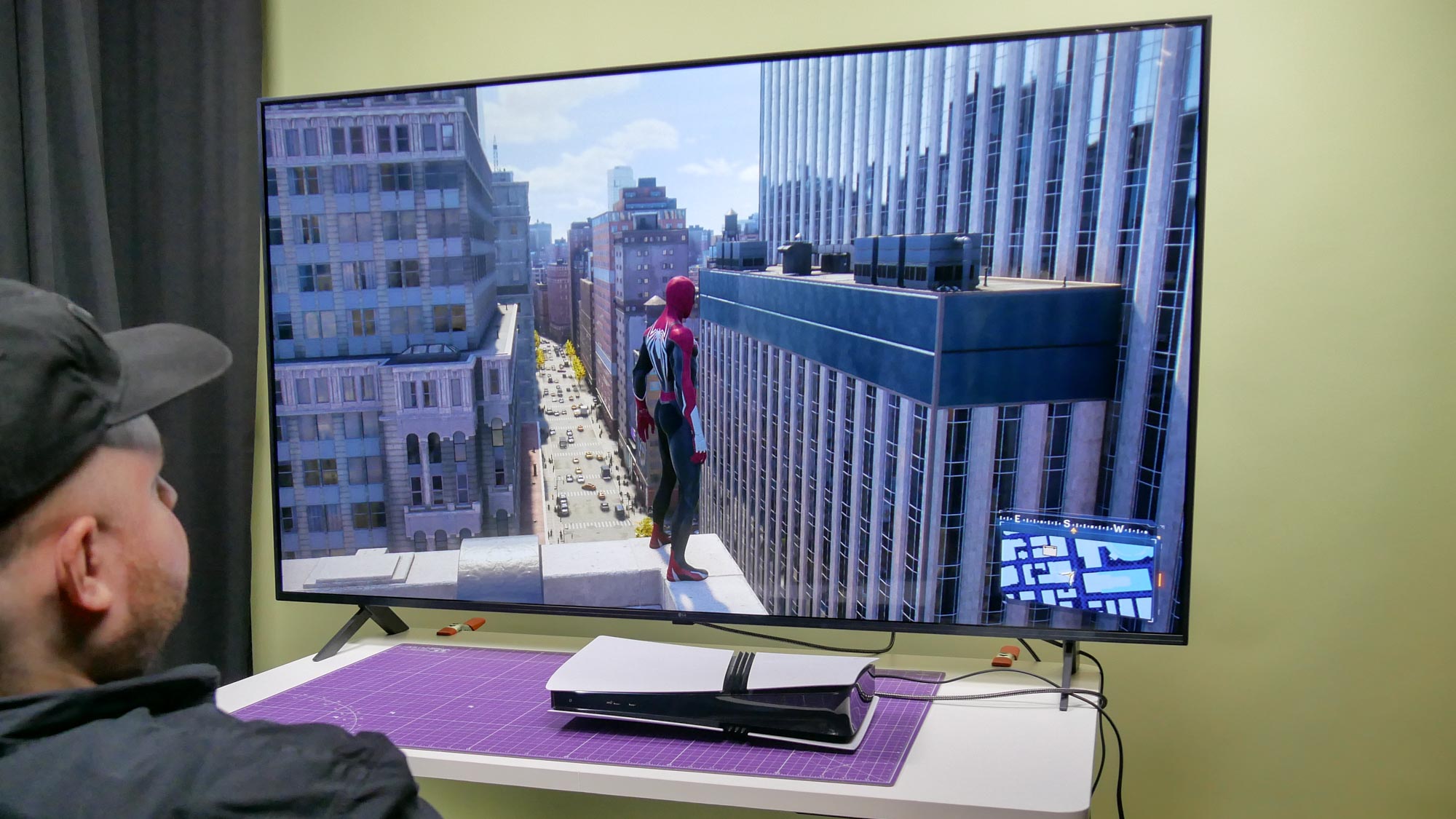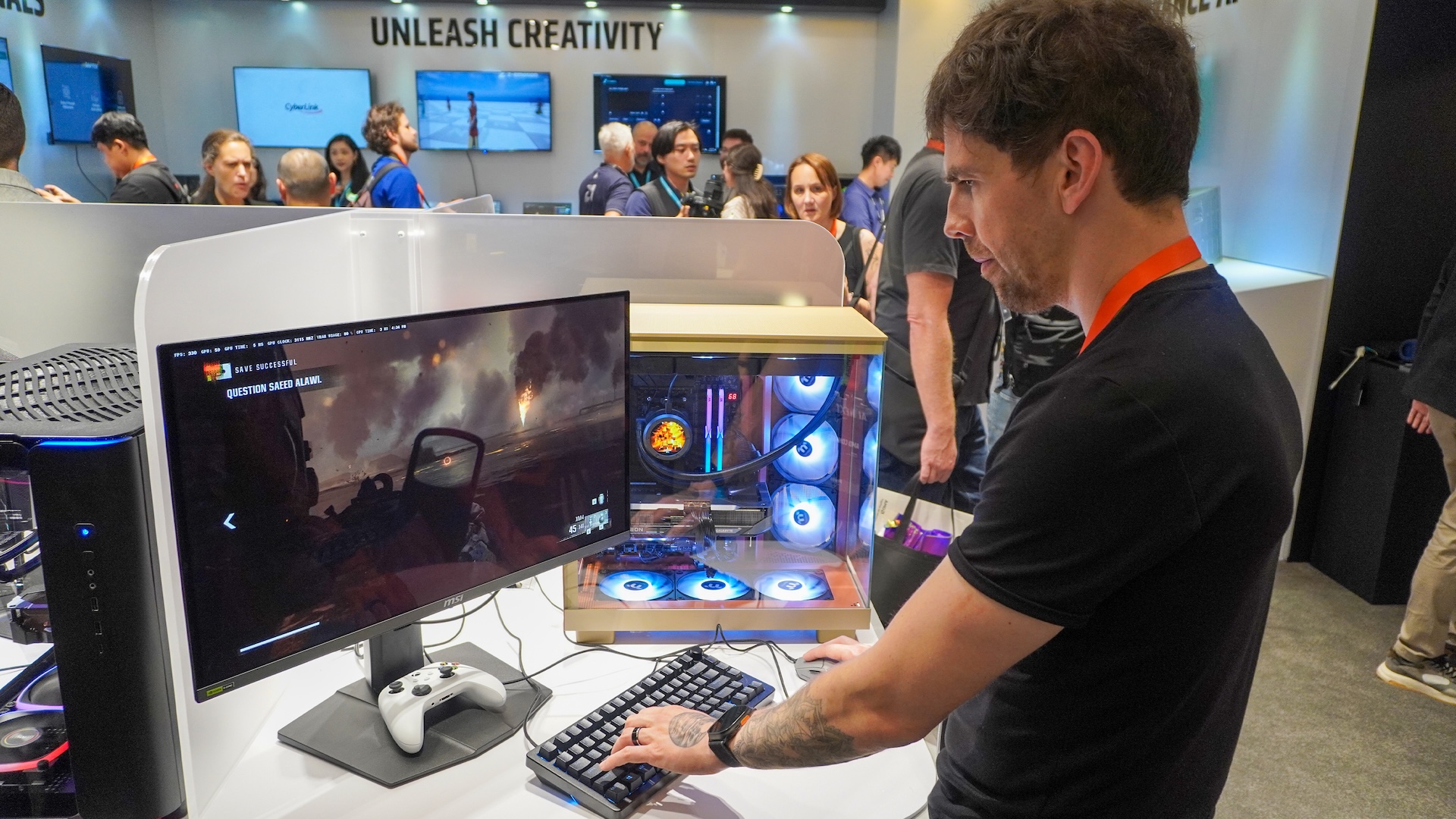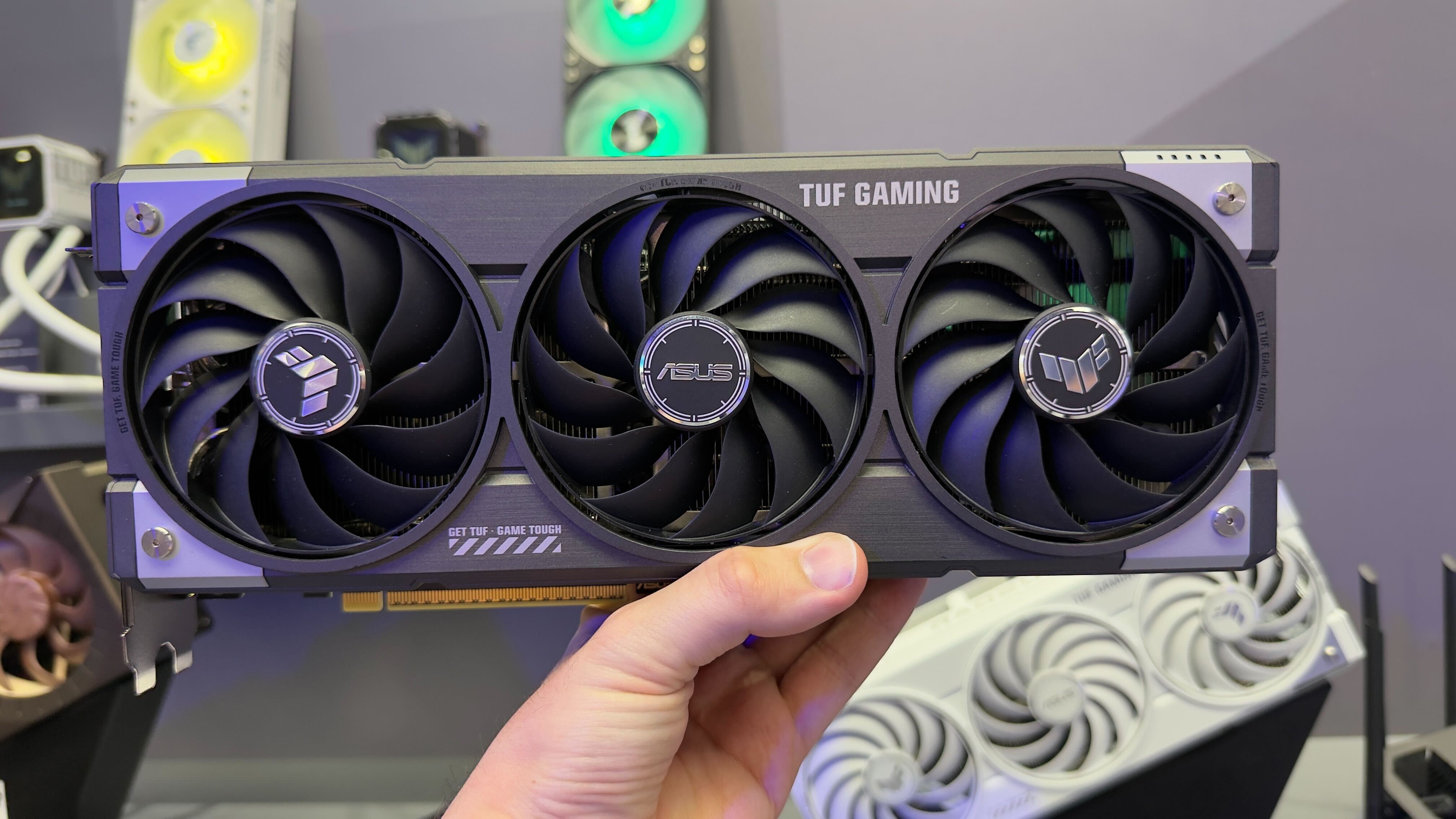PS5 Pro is getting a big upgrade in 2026 — I asked Mark Cerny what’s coming, and why AMD’s future PC GPUs feel more 'PlayStation' than ever
Sony's Mark Cerny explains how AMD and Project Amethyst contributed to the PS5 Pro's impending 2026 upgrade

If you play games on a PlayStation 5 Pro, it sounds like odds are good you'll be seeing an upgrade next year.
Specifically, PS5 lead architect Mark Cerny has said the company is working on implementing an advanced graphics upscaling algorithm for PS5 Pro that should deliver better performance than its existing PSSR (PlayStation Spectral Super Resolution) upscaling tech.
According to a conversation I recently had with Cerny, the new tech "is a drop-in replacement for the current PSSR" that should be straightforward for developers to accommodate when it arrives on PS5 Pro consoles in 2026.
Of course, only the PS5 Pro is slated to get this upgrade, as the base PS5 doesn't have the hardware to handle PSSR.

This is potentially a big deal for PS5 Pro owners because upscaling algorithms like PSSR can deliver significant improvements in framerate and image quality.
These upscalers have become far more popular in the last few years, thanks in part to rapid advancement of the algorithms employed to improve graphics in real time.
This is not for proprietary technology. This is really trying to move the industry forward."
Mark Cerny, PS5 & PS5 Pro Lead Architect
And while Nvidia has helped lead the charge with its DLSS (Deep Learning Super Sampling) upscaling tech, AMD recently released a compelling alternative with the latest version of FSR 4 (FidelityFX Super Resolution) for AMD's Radeon RX 9000 series GPUs.
Get instant access to breaking news, the hottest reviews, great deals and helpful tips.
Some folks feel FSR 4 is quite good and competitive with DLSS 4 at this point, and I recently learned that might be because Sony's own Mark Cerny has been contributing (in some sense) to the development of AMD's upscaling tech.
That's because FSR 4 comes at least in part out of the work of Project Amethyst: a multi-year partnership between AMD and Sony that began in 2023.
I recently had the chance to sit down with Cerny alongside AMD execs Jack Huynh and Jeff Connell to chat about how Project Amethyst has gone so far, and what they told me is basically "faster than expected."
AMD and Sony say they've learned from each other, to mutual benefit
If you're not familiar, Project Amethyst was unveiled late last year in Cerny's PS5 Pro technical seminar video.
It's basically a fancy word for AMD and Sony teaming up to work together on building better machine learning algorithms and CNNs (Convolutional Neural Networks) for improving game graphics. Sony brings its expertise in console hardware and game development, AMD brings decades of experience building graphics processors. Both companies can freely use the results of the collaboration in their own work, as AMD already has by releasing FSR 4.
"This is not for proprietary technology," Cerny explained. "This is really trying to move the industry forward. Obviously we want to use these technologies on our consoles, but these technologies are available to any of AMD's customers freely."
According to Cerny and AMD's Huynh, the two companies are collaborating even more closely than they did when designing the PS5/PS5 Pro, with teams across Asia, Europe and North America meeting regularly to share findings. Perhaps unsurprisingly, they claim both companies are learning something valuable from each other that has helped accelerate progress.
As an example, Cerny mentioned that Sony helped AMD researchers integrate more demanding, graphically complex scenes into their research because Sony has seen first-hand how developers try to cram as much detail as possible into every scene.
"Mark makes us a better company," said Huynh. "We push each other."
Big chunks of RDNA 5, or whatever AMD ends up calling it, are coming out of engineering I am doing on the project."
Sony's Mark Cerny
AMD, on the other hand, pushed Sony to set up a dedicated quality assurance team specifically focused on vetting whether each new iteration of an upscaling algorithm was actually better than what came before it.
"This was news to us," said Cerny. "We did not have this at SIE; it really hadn't occurred to us. And it turns out to be vital."
That anecdote may help explain why this collaboration has reportedly made such quick progress. Cerny claims he expected Project Amethyst to take years to generate a significantly better upscaling algorithm, and was surprised when the team did it in roughly nine months.
"The algorithm they came up with could be implemented on current-generation hardware," said Cerny. "So the co-developed algorithm has already been released by AMD as part of FSR 4 on PC. And we're in the process of implementing it on PS5 and it will release next year on PS5 Pro."
That sounds like good news for PS5 Pro owners, as AMD's FSR 4 was launched in March of this year to generally positive press. My colleague recently played Call of Duty on AMD’s Radeon RX 9070, which is built on the RDNA4 architecture, and he was impressed at how well FSR 4 makes the game look and run on a mid-range card.

While FSR and PSSR are two different algorithms, Cerny suggests that the version coming to PS5 Pro in 2026 is in no way weaker or less than AMD's FSR 4.
"It's not a cut-down [version] of the algorithm," he explained. "It's the full-fat version of the co-developed super resolution that we'll be releasing on PS5 Pro."
Of course, we'll have to wait and see what final form the successor to PSSR takes when Sony (hopefully) rolls it out in 2026. Cerny said the company is still working with developers to figure out the best way to release an update to PS5 Pro owners, so expect an update on that from Sony in the future.
As PlayStation moves, PC gaming moves too
I expect we'll continue to hear about advances coming out of Project Amethyst for some time to come. But while I think the impending PSSR upgrade is pretty intriguing, I'm still a little surprised to learn the architect of the PS5 has his hands in AMD's upscaling tech.
Because what I didn't really think through until after I chatted with Cerny, Connell and Huynh was the fact that AMD is also building software and hardware based on learnings from Project Amethyst.
So when AMD ships its next wave of graphics cards, they will have been designed with input from Mark Cerny and Sony engineers.

"Big chunks of RDNA 5, or whatever AMD ends up calling it, are coming out of engineering I am doing on the project," said Cerny. "And again, this is coming out of trying to move things forward. There are no restrictions on the way any of it can be used."
AMD chief GPU architect Mike Mantor and his team will presumably be able to use whatever they glean from Sony (via Amethyst) to design the next generation of AMD graphics hardware, which will lay the foundation for a future of PC gaming.
If rumors are to be believed, we could see the next generation of AMD graphics tech as soon as 2026. But on the Sony side, Cerny doesn't expect to be talking about anything other than software for years to come.
"AMD is moving extremely quickly," Cerny said. "What I'm trying to do is prepare for the next generation of consoles, so my time-frame is multi-year here."
But PS5 Pro owners won't have to wait that long to see the results of his work on Amethyst, as the replacement for PSSR is slated to ship sometime in 2026.
More from Tom's Guide
- AMD FSR 4 could be coming to gaming handhelds — why that's potentially a big deal
- Death Stranding 2 is the most beautiful game I've ever played — and it's everything I'd hope for in a sequel
- I've played 8 Nintendo Switch 2 launch games — here's the best one you (probably) skipped but really should buy now

Alex Wawro is a lifelong tech and games enthusiast with more than a decade of experience covering both for outlets like Game Developer, Black Hat, and PC World magazine. A lifelong PC builder, he currently serves as a senior editor at Tom's Guide covering all things computing, from laptops and desktops to keyboards and mice.
You must confirm your public display name before commenting
Please logout and then login again, you will then be prompted to enter your display name.

